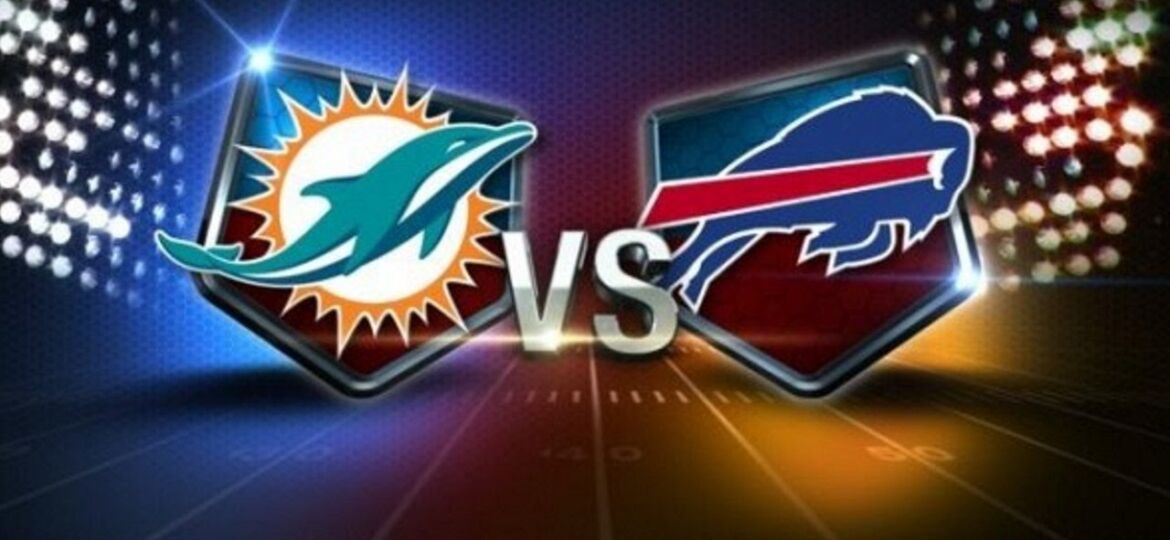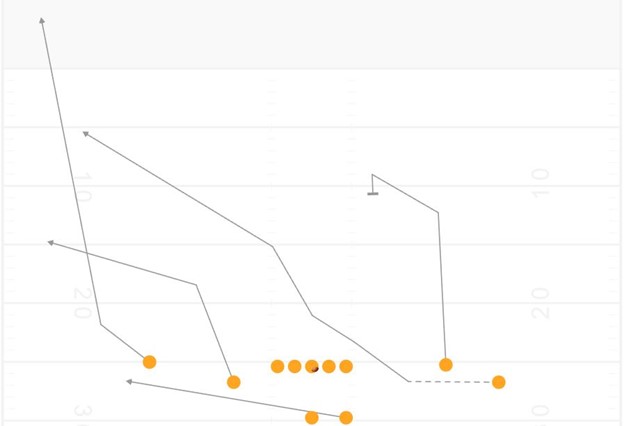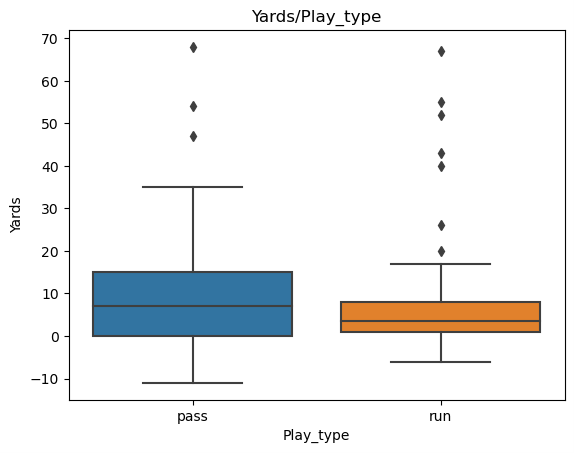
Last week’s game against the Bills was unfortunate, however, it does not herald the end of the offensive dominance we’ve seen from the Dolphins. While there are some key takeaways to learn from based on how the Bills attacked the Miami offense, a large portion of that loss (at least offensively) came down to things unlikely to happen very often, regardless of opponent. This was then followed up by a failure to score in the redzone down multiple possessions in the 2nd half. The game fell apart more from a series of unfortunate events rather than a pure blowout. That’s not to say there aren’t learnings from the way Buffalo chose to attack the Dolphins offense.
Offensive Breakdowns: The fall at the end of the 1st half
The 1st half of the game started tied 14-14 and while the Dolphins did notably need to work much harder than Buffalo to score, we still managed to keep pace. That was until the 3rd offensive possession where things started to go off the rails and the self-inflicted wounds began to pile up. This drive consists of a 5 yards penalty, a screen that got swatted at the line, a premature checkdown and a fumble, none of which were caused by bills game planning to take away what makes this offense tick. The following drive, which was the only other 3-and-out in the relevant portion of the game, came down to a run stopped that got stuffed, the 3rd screen in 4 plays and a pass disrupted by immediate pressure from the DT before Tua could get through his progression.
Both of these drives were capped by negative plays created from momentary, uncharacteristic lapses in play rather than anything schematic. I can sit here talking nitpicking individual play in this sequence, but the real point is this: Two consecutive drives in the 1st half failed due to rare individual miscues and that blew the game open for the Bills. The first real decision-based mistake occurred the final drive before half. With 1:39 on the clock and 2 timeouts, there was more than enough time to get the ball in field goal range or potentially score, however, we took a very passive approach that may have ultimately sealed the game. It’s easy to sit here and look at the optimal outcome, but from a raw momentum standpoint coming out of the half down 7 with ball vs coming out of the half down 14 with ball after the difficulties in the 1st half would’ve been MASSIVE. Given the situation, it wasn’t an unreasonable decision to take it to the half but playing an opponent of the caliber of the Bills it’s a mistake to give up on a free possession.
Adjustments moving forward: Creating more answers
There are two primary areas to look at when reviewing this game:
- The Bills ability to send outside corners vs compressed sets: The Bills’ ability to send outside corners against our compressed sets caught us off guard. This is something that MUST be accounted for moving forward; this is not something we can allow teams to feel comfortable doing especially considering the frequency of the play-action that requires Tua to completely turn his back to the opposite side of the field. This loses to this style of blitz for two reasons: the QB is completely unable to quickly attack the blitzer because he cannot see him, and also it removes the back who would be in position to help if he were in a standard blocking assignment from that side. To counter this, we should consider incorporating plays from compressed formations with quick vertical routes and fast-breaking flat routes, capitalizing on the speed of our receivers to attack this style of defense effectively. This approach can also exploit weaknesses in cover 2, potentially opening up more opportunities for big plays. This style of defense often comes from a 2-high cover 3 shell, and this forces the linebacker to have to cover the flat while being out leveraged. Since this gets ran against compression and towards “typically” the short hash of the field, this weakness is hidden. With the weapons on this team, there’s potential to exaggerate it still with a concept like this.
- The clear reliance on a cover-2 shell to take away big plays: In clear passing situations, the Bills relied on a cover-2 shell, which limited our ability to make big plays. We need to expand our repertoire to combat this defensive strategy. One solution could be utilizing a variation of the y-cross concept, with the “under” route attacking the cloud flat underneath getting 10 yards of depth. The bills often had their outside flat defenders in cover 2 get extra depth covering up one of the clear typical weaknesses in the coverage allowing the Dolphins to attack the flats for some more yardage. If this is the adjustment teams are going to make to take away the big play, then it is mandatory to make the “short” play a 10-yard gain and punish defenses for running a coverage this scared of the deep ball.

Looking ahead: Examining the raw numbers
Another option to deal with 2-high safety is to not allow teams to run it. Running this style of defense removes players from run defense, knowing that a simple solution is to approach certain games with a heavy run approach. This is something that tends to be viewed as inefficient nowadays in the NFL, however, the Dolphins are currently averaging 6.58 yards per carry which if kept up is more than efficient enough to feature prominently in the modern game. For reference, the NFL average for yards per pass attempt is 5.95 yards per attempt. A large portion of the reason the average is so high is due to the sheer number of explosives runs this offense is able to create. So far on the season, we have five runs of 40 or more yards while only three passes for 40 or more and about 40 more pass attempts.
This is a result of a few factors, but all primarily revolve around utilizing our speed. Teams frequently run 2-high safety defenses creating gaps in the run defense due to the WR speed on this team, while at the same time the run has access to backs that are just as fast. Having fast backs allow for a higher chance for bigger runs since they don’t need as much space to pull away from backers and lineman. The combination of the two factors is what leads to the explosive plays seen from this running game alongside other factors like great offensive line play in the run game on this team as well as blocking diversity created from the play calls themselves.
This really is all to say, if defenses want to come out in a 2-high look as a means to deal with the deep passes, then force them out of it by attacking that area anyways in the run game.

Conclusion: Forging Ahead with Resilience
While yes, on certain plays the offensive line could’ve played better, there’s much more to look at than just players need to play better. While the Bills didn’t necessarily show the NFL the blueprint on how to stop this offense, they might have shown us early ways teams might try. It’s entirely possible this game happening as early as it did is far more helpful than hurtful, as it gives plenty of time to think and prepare for how to deal with these potential issues.

